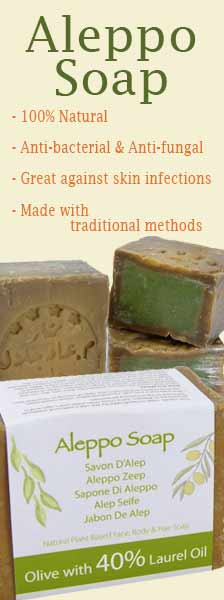INDEPENDENT STUDY links Lung damage to Toxic Cleaning Products22 December 2022 | Admin  An independent study based on 20 years of research published in 2018, reveals that cleaning your home with toxic chemical cleaners & bleaches can damage lung tissue. The study showed that cleaning with such products as little as once per week could be as damaging over time to respiratory health as smoking a pack of cigarettes a day for 20 years! Published in the American Thoracic Society’s American Journal of Respiratory and Critical Care Medicine this is an overview originally authored by Dr Ryan for your reference: STUDY SUMMARY: FINDING 1: Weekly use of home cleaning products is as damaging to lung health as smoking 20 cigarettes per day for 20 years. By now, just about everyone knows the dangers of smoking cigarettes. Among their many hazards is depleted lung capacity—the result of damage to the tender internal tissues of the respiratory system. Lung capacity is important because it is a marker of overall health and fitness. The body depends on the lungs’ life-giving ability to oxygenate blood and expel carbon dioxide—the waste product of metabolism. Decreased lung capacity can lead to obvious declines in fitness, but since the body is so dependent on oxygen exchange, whole systems of the body can be compromised when the lungs become even partially debilitated. The ECRHS III study concluded that women who used home cleaning products at least once per week saw a similar reduction in lung capacity as those who smoked a pack a day over the same period. According to the authors, “Women cleaning at home or working as occupational cleaners had accelerated decline in lung function, suggesting that exposures related to cleaning activities may constitute a risk to long-term respiratory health.” Of the participants, 53% were women and 44% were lifelong nonsmokers. FINDING 2: Women are affected more than men. Though there was a clear correlation between women who cleaned and respiratory function decline, there was no similar correlation for men. While the scientists pointed out that the total number of men regularly using household cleaning products was significantly lower than women, the study summary also points out previous research that elaborates on the increased sensitivity of the female respiratory system. While not completely unaffected, male lungs have been proven to endure greater exposure to environmental pollutants—including cigarette smoke and wood dust— before experiencing a similar drop in lung capacity. 2, 3, 4 This finding is particularly concerning considering women engage with cleaning products more frequently than men.
The ECRHS III survey categorised participants as “not cleaning,” “cleaning at home,” and “occupational cleaning.” While the “not cleaning” subset of women saw only expected, age-related change in lung capacity, the “cleaning at home” group saw the same decreases in lung health as “occupational cleaning.” How could this be the case when cleaning professionals are using cleaning products on a daily, ongoing basis, versus someone performing chores less frequently in their own home? First, consider that occupational cleaners are most often required to use protective gloves, clothing, and even masks while performing their duties. Those at home casually disregard warning labels and use cleaning products without adequate protection. Additionally, professional cleaners move from room to room, working in larger spaces with better ventilation than someone at home.
FINDING 4: Liquid cleaners may be as harmful as sprays. Women who regularly use cleaning products have increased rates of asthma. Study researchers originally suspected that products delivered through a spray or mist would prove more harmful than those applied as a liquid, gel, or wipe. Surprisingly, the study found no significant difference between cleaner delivery types. FINDING 5: potentially problematic ingredients The study hypothesised that ammonia, bleach and quaternary ammonium could be potentially problematic ingredients. The researchers stated, “one could hypothesise that long-term exposure to airway irritants such as ammonia and bleach used when cleaning at home could cause fibrotic or other interstitial changes in the lung tissue, thereby leading to accelerated decline of FVC [forced vital capacity].” FINDING 6: cleaning products have increased rates of asthma Women who regularly use cleaning products have increased rates of asthma. Study researchers originally suspected that products delivered through a spray or mist would prove more harmful than those applied as a liquid, gel, or wipe. Surprisingly, the study found no significant difference between cleaner delivery types. Researchers found increased rates of asthma within the groups who used cleaning products regularly. This echoes multiple recent studies that have linked the use of harmful chemical cleaning agents with the onset of asthma. FINDING 7: Damage is cumulative over time.
The researchers stated, “one could hypothesise that long-term exposure to airway irritants such as ammonia and bleach used when cleaning at home could cause fibrotic or other interstitial changes in the lung tissue, thereby leading to accelerated decline of FVC [forced vital capacity].” When chemicals are regularly inhaled into the sensitive tissues of the lungs, it makes sense that the long-term consequence could be serious respiratory problems. “It seems biologically plausible that exposure to cleaning chemicals,” the researchers wrote, “could result in accelerated lung function decline and chronic airway obstruction; low-grade inflammation over many years could possibly lead to persistent damage to the airways, alternatively, persistent damage could result from continued exposure after onset of cleaning-related asthma.” They hypothesised that “airway irritants such as ammonia and bleach” cause “fibrotic” changes to the delicate lung tissue, essentially scarring the lungs. Simply stated, regular exposure to the toxins within the home may not allow therespiratory system an opportunity to he
Our team is aware of the responsibility to respect and save our environment, with our GBPro products we only design, produce and select products that are environmentally and eco-friendly, or have clear environmental advantages over similar products available in the market. Our concentration levels make buying GBPro products Eco Freindly but Economical as well We are gratefull for this Public report, not only for ourselves for the future generations. Start now and we can give them a better healthier life....... |
|
help, advice & sales: 01202 699500  Shopping Bag   |
 FINDING 3:
FINDING 3: 
 The study hypothesised that ammonia, bleach and quaternary ammonium could be potentially problematic ingredients.
The study hypothesised that ammonia, bleach and quaternary ammonium could be potentially problematic ingredients. al, creating a condition where internal damage accumulates. Dr. Cecilie Svanes, a professor at the University of Bergen and senior author of the study, said, “We feared that such chemicals, by steadily causing a little damage to the airway’s day after day, year after year, might accelerate the rate of lung function decline that occurs with age.
al, creating a condition where internal damage accumulates. Dr. Cecilie Svanes, a professor at the University of Bergen and senior author of the study, said, “We feared that such chemicals, by steadily causing a little damage to the airway’s day after day, year after year, might accelerate the rate of lung function decline that occurs with age.










